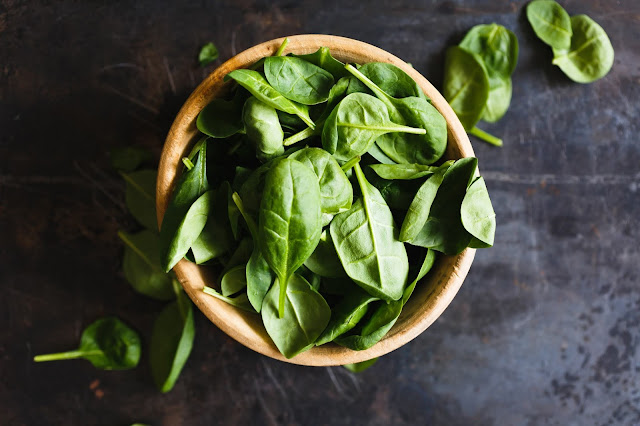The nutrition of spinach is amazing!
Think again about the nutrition of spinach:
Spinach is a nutrient-rich vegetable called a comprehensive nutritional vegetable. Even if you are not familiar with vegetables, you know how nutritious they are. This time I would like to review the nutrients contained in spinach in a digest format.I want to know before eating! Spinach nutrients
Iron content:
The typical nutrient of spinach is iron. I am surprised because the iron content in spinach is as much as in beef liver.
Iron is a material that makes red blood cells and helps prevent anemia. About 20% of Japanese women are said to be anemic. Care should be taken if symptoms specific to anemia occur, such as fatigue.
Carotene:
Next iscarotene, a representative antioxidant. Suppressing the action of active oxygen has the effect of preventing cancer. With 100g of spinach, you can get 40% of the daily dose.
Vitamin C:
Vitamin C increases immunity and helps prevent colds. It also promotes the production of collagen and has a beautiful skin effect that prevents stains and the like. Vitamin C is more effective when eaten at the same time as vitamin E. The wisdom of spinach, which is cooked with "sesame" containing a lot of vitamin E, uses the wisdom of the old people.
Potassium:
As you know, potassium is a nutrient that takes too much salt out of the body. It has an effect of lowering blood pressure and is effective in relieving swelling.
Manganese:
Many people throw it away, the pink part at the base of spinach. Contains manganese, a nutrient that helps bone formation. Insufficient manganese can cause osteoporosis, sterility, and rough skin. Please use it without throwing it away, because it is a nutrient that tends to be deficient.
- Reference: Don't throw away! The pink color at the base of spinach is nice for the body.
Oxalic acid:
Oxalic acid needs a little caution. It binds to the iron you want to take and interferes with absorption in the body. Therefore, the absorption rate of iron will be low. Therefore, oxalic acid is reduced by boiling down. However, it is not possible to remove all oxalic acid, so it is necessary to eat spinach in a balanced manner with various ingredients.
Reference: How long is the boiled time! ? Boiled spinach that does not miss the deliciousness and nutrition
Besides that, spinach is also rich in vitamin B12 and minerals such as folic acid, magnesium and zinc.
Is winter spinach nutritious?:
Such “spinach” can be seen throughout the year at the supermarket, so there is less awareness of the season. The spinach season is the cold season from November to February. Did you know that spinach during this cold season contains more nutrients than spinach in summer? It is because of this difference in the amount of nutrition that spinach in winter is said to be sweet.
I asked the producer Kusuki of Kagawa Prefecture why the amount of nutrients contained in spinach differs between summer and winter. “For example, the amount of vitamins in winter spinach is nearly three times that of summer spinach. Summer spinach can grow faster and harvest before storing nutrients. This is because the plant itself stores more nutritional value in order to withstand the heat, which means that it doesn't freeze even when the temperature drops below freezing, which is why winter vegetables are said to have a strong taste. "
Even if you think about nutrition, there is a reason for the season of vegetables. I would like to thank the nutritious spinach that has grown in the harsh nature!









